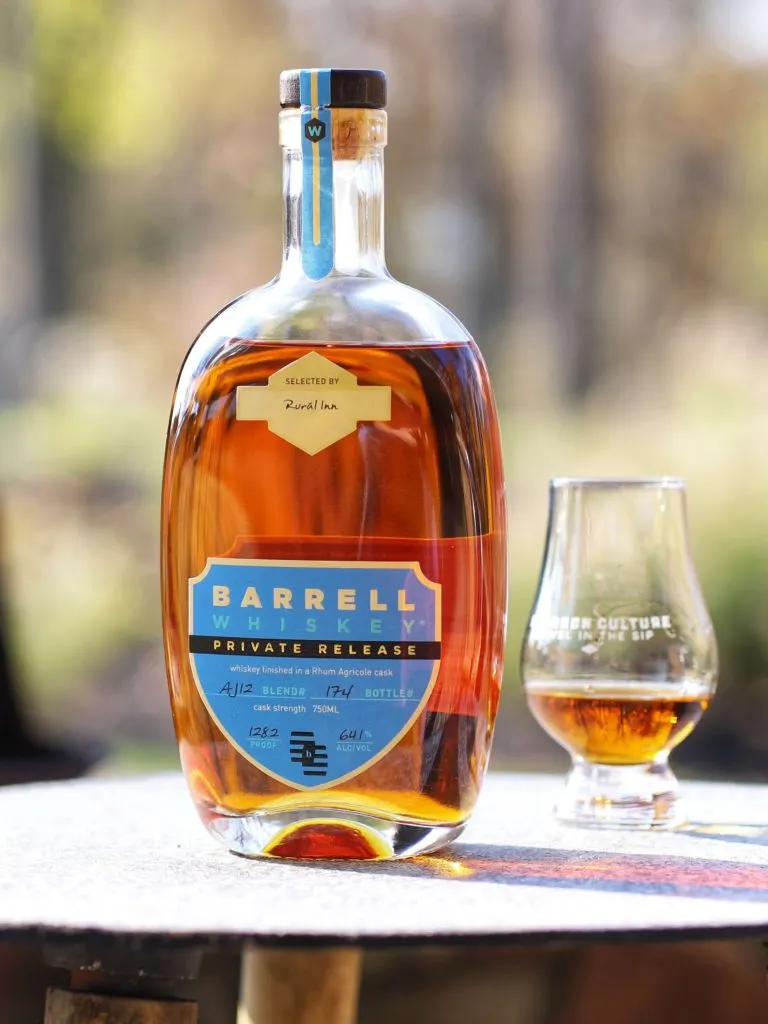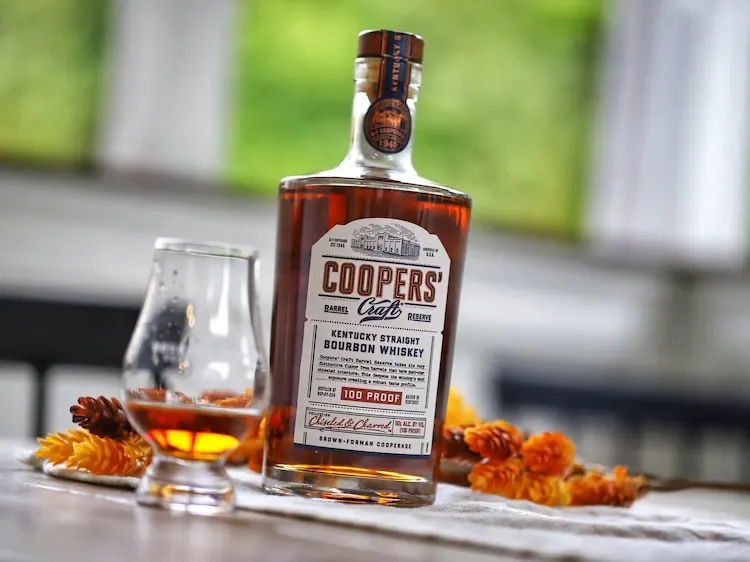| Don't like ads? | No ads |
*Bourbon Culture is reader-supported. When you buy through links on our site, we may earn an affiliate commission.
Old Forester 1924 is the talk of the town right now and everyone has an opinion on it. But the one thing that I can’t understand is why so many people are tripping over the basics of what this bottle has inside of it. So let me spell it out for you – it’s Early Times bourbon. But since the Early Times brand was sold off to Sazerac in 2020, it has created some confusion in the enthusiast world.
That’s where I come in. I’m going to connect the dots for you about how the sale of Early Times almost 4 years ago has directly resulted in an Old Forester bottle that contains Early Times bourbon.

How Brown-Forman’s decision to sell the Early Times brand eventually lead to the launch of Old Forester 1924
During the height of the pandemic in late spring of 2020, the world still seemed very much upside down. So when the news came out that June that Brown-Forman was selling off their Early Times brand, it struck me as a little bit odd. Why was it happening at that exact time when the future of every business was in turmoil?
This led me down a rabbit hole of clues that Brown-Forman had probably decided long before June, 2020 that they were going to sell off the Early Times brand. I don’t know what their exact reasons were, but there were a lot of telltale signs. And before you stop reading this and scroll to the bottom, let me assure you that the backstory is pretty interesting.
I want to start off by saying that I have the benefit of hindsight when I type this. But it became clear to me while I was researching my article on Brown-Forman’s warehouses in Kentucky that Brown-Forman was preparing to sell the the Early Times brand as far back as 2018.

In late 2017/early 2018, Brown-Forman changed the name of their Early Times Distillery (DSP-KY-354) in Shively to the Brown-Forman Distillery. What was the reason behind this? After all, it held this name for over 60 years – and heritage is everything to a bourbon company. I believe the name change was one of the first signals that they were getting the brand ready to sell. Step 1 of any brand sale to another brand is to begin removing name associations. Potential customers don’t want a brand’s name/image/likeness to be tied to their competition if they can help it.
Shortly after that, Brown-Forman began to actively reduce their physical stocks of Early Times barrels. Remember how Early Times Bottled-in-Bond came out of nowhere in 2019? That was Brown-Forman liquidating excess stocks of Early Times bourbon quickly. Simply making more bottles of Early Times Whiskey wasn’t going to cut it because it was not a big seller.
Brown-Forman also began to sell off barrels of “whiskey” (not bourbon) that went into the Early Times blend. These barrels used the Early Times mash bill, but were aged in used bourbon barrels. It was a cost-cutting measure they put in place in the early 1980’s. Rumor has it that Barrell Craft Spirits ended up with a majority of these barrels of whiskey (some were as old as 18 years old) and they served as a base for their Private Release Whiskey line (note: MGP Light Whiskey is now finding its way into more modern releases of this line). The timeline matches up with Brown-Forman emptying out Warehouse O in preparation to tear it down.

What is Warehouse O? It was a single-story, metal clad rickhouse on the southern end of the Brown-Forman campus. It was built during a period of time where Brown-Forman was expanding rapidly and not every product they made needed to be matured in a heat-cycled warehouse. Warehouse O was ideal for aging barrels of Early Times whiskey and bourbon due to their lower status in the American Whiskey realm. Early Times was a cheap value brand and taking up valuable space inside of the brick heat-cycled warehouses was not the best use of their resources. Of note: Warehouse O did mature barrels of Old Forester bourbon too, but they preferred to use the heat-cycled warehouses if they could.

With Brown-Forman slowly erasing the Early Times brand from their portfolio, they went searching for a buyer. They found one in Sazerac. It is my opinion that a deal was tentatively agreed upon sometime in 2019 and if it wasn’t for the pandemic hitting in March, 2020, that the sale of the brand would have been announced sooner. It took a few months for things to calm down before it was officially announced.
As part of the sale, Brown-Forman sold off remaining stocks of Early Times whiskey and bourbon barrels to Sazerac. They were trucked to Barton Distillery for storage, blending and bottling. Sazerac continued to release Early Times products with minor tweaks to the old bottles while their own distillate was produced and aged. 2024 could be the first year that Early Times might have Sazerac/Barton-made distillate in the bottle, but no announcement has been made (wait to see a label change for this confirmation).
The Early Times mash bill lives on as the King of Kentucky mash bill
A little secret that I’m not sure was fully announced after the sale in 2020 was that Brown-Forman can and still does produce their old Early Times mash bill – 79% corn, 11% rye and 10% malted barley. Only now they don’t call it Early Times. Instead, they have dubbed it the “King of Kentucky” mash bill. That’s because King of Kentucky has always used barrels of Early Times rather than Old Forester bourbon (whose mash bill is 72/18/10). And since King of Kentucky was such a hit for Brown-Forman, they didn’t want to lose future access to keep selling it.

Since distilleries don’t trademark specific mash bills, this is all totally legal to do. The 79/11/10 mash bill would continue to be produced in limited amounts. Another thing that wasn’t said out loud was that Brown-Forman kept a decent amount of Early Times barrels of various ages to ensure that King of Kentucky could be made for years to come without interruption. But the problem with that is not all barrels will mature in the exact same style. King of Kentucky used only the best barrels that Brown-Forman’s Master Taster identified and only a very low percentage of barrels ever made the cut to wear the King of Kentucky label.
Therefore, it is imperative that Brown-Forman continue producing the “King of Kentucky” mash bill. I have read that they will devote a few days each “season” (a bourbon season is one half of the year) to distilling it. I don’t know much about Brown-Forman production numbers, but I would assume that would turn out to be around 1000 barrels produced each year. Even if you start with 1000 barrels of bourbon, it is unlikely that even 10% of them will reach the age of 14+ years old and be of exceptional quality. Some barrels will run dry, some barrels will become over-oaked years before that and some barrels will straight up not taste special once they past the 10 year mark.
Brown-Forman’s dilemma: what to do with King of Kentucky barrels that fail to become good enough for King of Kentucky?
Here’s where the story finally comes back around to Old Forester 1924. It’s been 3.5 years since the sale of the Early Times brands. Brown-Forman is probably sitting on 500 barrels or so of the 79/11/10 mash bill for each sequential year. For example, they probably have 500 barrels of 5 year old KoK MB, 1,000 barrels of 6 year old KoK MB, etc. I do not know these numbers to be exactly true, but I figure they’re a good guess.
At the 10 year old mark, I think it’s pretty obvious to Brown-Forman’s Master Taster if a barrel has what it takes to be a King of Kentucky. But what do you do with the hundreds of barrels that don’t make the cut? In Brown-Forman’s case, they blend them away into lesser products like Cooper’s Craft. Why Cooper’s Craft? Because it doesn’t officially wear the Old Forester name. But can you imagine dumping a 14 year old barrel that failed to become King of Kentucky into a $30 bottle of Cooper’s Craft? It’s a crime against nature.

So Brown-Forman did what would make them the most money – they rolled out with a new limited release label to their Whiskey Row lineup. The price is a representation that the age of the whiskey inside of it is almost double that of any other Whiskey Row product. I personally don’t think that $115 is too much to ask when you look at it in the vacuum of the brand. But the truth is that $115 begins to look like a steal when you consider that what’s inside of the bottle is essentially slightly younger King of Kentucky reject barrels.
Before I move on to the subject of our story, I want to plant my flag here for a future prediction: I predict we’re going to see another Old Forester label using slightly younger barrels of the “King of Kentucky mash bill” in the future. You heard it here first!
Old Forester 1924
I think the story that I just told you is far better than the BS marketing one on the front label of 1924. But there is one part that had me confused before this bottle finally came out. It was how the 1924 label mentions that Brown-Forman bought up a lot of barrels from other distilleries prior and during Prohibition to sell under their medicinal license. This led me to assume that Old Forester 1924 was a blend of Old Forester’s 72/18/10 mash bill and the King of Kentucky 79/11/10 mash bill. But what all of the media releases are saying is that it’s strictly the King of Kentucky mash bill inside of it. So I guess I was wrong.

Now that the whole background on how this bottle came to be, it’s time to get down to tasting. As usual, I sampled this neat in a glencairn. Here we go!
Tasting Notes
Nose: I’ve had 3 sessions with this bottle and each time I lift my nose to the glass, I swear it reminds me of my times I’ve had King of Kentucky bourbon. The nose is dripping with chocolate sauce, black cherries, caramel and antique wood. Later in the session, I begin to find maple syrup notes and a somewhat bready note like pancakes. Please don’t take the word “bready” to be in the same style as many craft whiskies, it’s nowhere near that. For spices, I get a lot of nutmeg and a little bit of fennel seed. Strangely, I found very little cinnamon.
Palate: The oak on the tongue is perfect to me. It tastes just like a baby KoK – no wait – I didn’t word that correctly. What I meant to say is that between the oak I find on a 14-18 year old King of Kentucky, this one barely tastes different. And that’s a good thing. I do find some occasional bitterness from the oak and stale tobacco leaf, but these seem more like a feature of the bourbon rather than a defect.
Fruits are easy to find but don’t overwhelm – cherry cordials, unsweetened apricot and a tiny bit of orange rind. The spices stay mostly mild with allspice and woody cinnamon. I also find notes of almond extract which I was not expecting at all. This is a note that I don’t believe I’ve ever found in a Brown-Forman product.
Finish: The fruit notes fade away on the end and I’m left with some more basic notes of toffee, chocolate and almond slivers. Tannins remind you of the age of this bourbon with plenty of oak and tobacco leaf. This finishes like a whiskey worth 3 times as much money.
Score: 9/10
What an absolutely fantastic dram from start to finish. I was thinking this would be good before I had it, but I didn’t think it would be this good. The similarities between 1924 and King of Kentucky were instantly recognizable to me. I fully expect somebody out there to draw a comparison to Elijah Craig or Knob Creek or one of the many other bourbons that are also around 10 years old, 100(ish) proof and priced around $35. But the thing is – this tastes much older than any of those while also retaining some brighter notes that typically get aged out of older bourbon. It simply has the best of both worlds and I rarely say that about many other bourbons today.

Final Thoughts
The Facebook reviewers out there are giving this bottle mixed reviews. Don’t listen to the ones who say this isn’t special. Old Forester (and Early Times) takes the most time to acquire a taste for it. I know this from experience. I don’t know of anyone who started out drinking bourbon and liked Old Forester right off the bat. But if you give it some time, you’ll realize how much more flavor combinations can be found in their products. If you have your own bottle of 1924 and aren’t enjoying it as much as you thought you would, take some time away from it to experience their other products and then come back to it. I assure you, your tongue will appreciate it more.
As for me, Old Forester 1924 has automatically earned a spot in my 2024 Most Memorable Whiskies of the Year (coming in November!) which shows you just how much of an impact it had. The best part is, we can expect a new one to drop every year. As it stands, this is one of the better values in bourbon (crazy I’m saying that about a $115 bottle) when it comes to age, complexity, taste and price. I better go find another bottle before more people read this review!
Featured Products
- Neat Traveler

- View Larger
- Description:The Aged & Ore Neat Traveler is a complete travel kit for spirits. We combined our widely praised Neat Glass with one of our 3oz Flight Bottles and housed them together in a custom EVA travel case. Perfect for a night away with your favorite pour. The tie
- Bottle Flight

- View Larger
- Description:The Aged & Ore Bottle Flight is a premium set of 4 custom silicone wrapped glass bottles designed to transport and share samples of your favorite spirits. The flight bottles come in a custom EVA travel case that fits perfectly in any small bag. An Aged &
- Travel Bundle

- View Larger
- Description:This Bundle combines two of our crowd favorite products, creating the ultimate travel bundle to bring along your favorite spirits and glassware. Bundle Includes: Neat Traveler (Gray) Bottle Flight (Gray) Note: This bundle is only available in gray and col
*Bourbon Culture is reader-supported. When you buy through links on our site, we may earn an affiliate commission.


Mike
Tuesday 30th of January 2024
I enjoy Cooper's Craft at 100 proof and now that I have read this article am very interested in grabbing a 1924 So much about whiskey is subjective as well as so many are critics without actually trying/knowing what they are criticizing It does not matter if you are a man or a woman. If 21 years old or 95 years old What your political affiliation None of that matters Whisky is a common denominator Cheers
David
Sunday 28th of January 2024
Great review and you are spot on that this is a bottle that is more appreciated when you go back to it.
Danny Lyne
Saturday 27th of January 2024
From what I read Early Times was one of the distilleries acquired in 1924 by Old Forester, so it’s fitting that OF 1924 consist of the ET mashbill.
Aaron Buescher
Saturday 27th of January 2024
Well crap